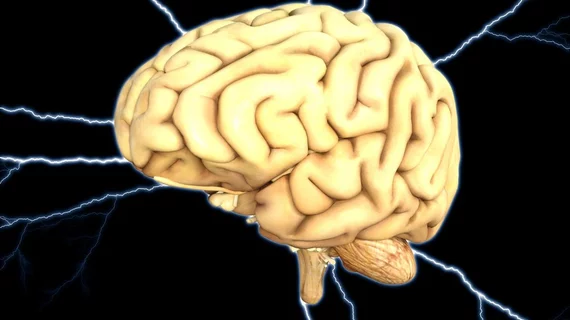Mixed-reality headset enhances accuracy of external ventricular drain insertion
Using a mixed-reality holographic computer headset, neurosurgeons can more accurately perform external ventricular drain (EVD) insertion, according a new study out of Beijing published in the Journal of Neurosurgery.
Commonly used to manage intracranial hypertension, intraventricular hemorrhage and acute hydrocephalus, EVD systems are traditionally inserted without seeing inside the brain—relying on individual knowledge of its anatomy. Imaging guidance devices can be used, but are costly, bulky and require transferring a patient to the operating room, according to the study
“To the best of our knowledge, this is the first positive experience with the use of such a new state-of-art technique to assist neurosurgeons in bedside EVD insertion,” said Ning Wang, MD, an author on the study, in a statement. “In addition to the function of navigation, the application of this technique would change the neurosurgical way of 'seeing is believing,' making the important structures visible around the lesion. Therefore, this will make surgery more minimally invasive and safe."
In order to create the preoperative surgical plan, the researchers used the Microsoft HoloLens mixed-reality holographic computer headset on 15 patients between August and November 2017. Markers were placed on the heads of the patients, and CT was performed and subsequently converted into three-dimensional data.
With the headset on, surgeons could superimpose holographic images over the physical heads of each patient and align the virtual markers with those physically placed on the patient.
The authors reported no adverse events when surgeons used the headset. And, compared to the 2.33 ± 0.98 mean number of passes needed in a control group of 15 patients who underwent traditional EVD, the mean number needed for the holographic assistance cohort was 1.07 ± 0.258. Mean target deviation was 4.34 ± 1.63 mm compared to 11.26 ± 4.83 mm in the control group.
“This study demonstrates the use of a head-mounted mixed-reality holographic computer to successfully perform hologram-assisted bedside EVD insertion,” lead author Ye Li, MD, PhD and colleagues concluded.
Their holographic-guided system did add an additional 40 minutes to the procedure, but the researchers noted similar time is needed when using any image-guided navigation.
While Li et al. did acknowledge limitations, including their small study size, they believe with time and improvements, the headset could be key to novel surgical techniques.
“With further improvement in accuracy and simplicity, this wearable mixed-reality holographic computer could also serve as a portable and low-cost navigational device for multiple neurosurgical fields in the future,” the authors wrote.

